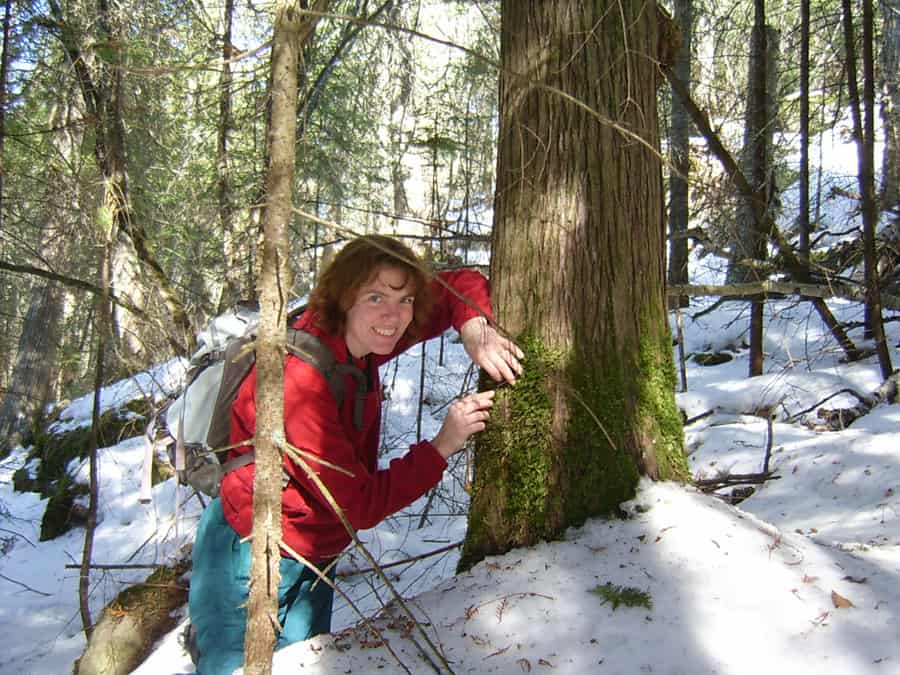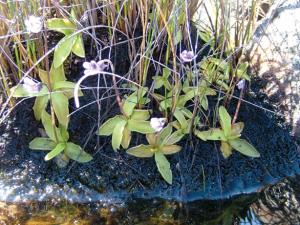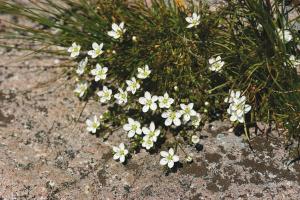
By Charlie Mahler, Wilderness News Contributor
“This area is not remote,” says Ilka Milne of the Nature Conservancy of Canada talking about the vast sweep of wild land that she is responsible for as the Program Manager of NCC’s Northwestern Ontario Program.
“It’s actually at the nerve center, because this incredible area is the head-
waters of three huge North American watersheds – the Mississippi, the Great Lakes, and the James Bay drainage. I think we should all be really concerned about how we protect the land. If you think about something contaminating your water, it doesn’t feel that remote, does it? We’re close to the homes of a lot of people then, I suppose.”
It is in this spirit that the Nature Conservancy of Canada (NCC), which is about to celebrate its second year of operations at the Fort Frances regional office that Milne runs, seeks to secure and manage lands in areas that support high levels of biodiversity and that face the greatest threats from what it sees as incompatible land use. The organization is currently targeting for preservation critical habitats along Lake Superior’s Canadian North Shore. In the western part of her program area, Milne and area conservation partners are doing the preliminary planning necessary to identify which habitat parcels warrant the Northwest Ontario Program’s focus in the near future.
“We’re further along toward the actual procuring of strategic parcels along the Western Lake Superior Coast because [NCC’s] Great Lakes Conservation Blueprint has been done and we have all the background. On the rest of my program area we need to get that conservation planning done,” Milne offers.

Along Lake Superior, NCC is in a race against creeping vacation cottage development in efforts to protect shoreline areas it sees as vital to a wild and biologically diverse North Shore.
“The habitat that we’re trying to protect is peregrine falcon habitat and alpine and arctic disjunct habitat,” Milne explains. “Things like butterwort, pearlwort, and black crowberry that have ranges on the North Shore of Lake Superior and then nothing until you get up to James Bay.”
Second-home development is subdividing more and more of Superior’s Canadian shore lands. While the Canadian North Shore is generally less developed – apart from the cities and towns that dot the shore – than that of Minnesota, the availability of Canadian land at bargain prices relative to the US market has NCC concerned.

“It’s not to say that we’re against any development on the Shore either, it’s just that we have the opportunity to develop intelligently for long-term needs,” she notes. “Subdividing, that’s kind of a one-time need, biodiversity is a long-term benefit.”
NCC hopes to protect critical parcels of land along Gitchi Gammi in a manner not unlike its acquisition of a 750 acre parcel on the Canadian side of the Pigeon River recently. There, with the help of its US sibling The Nature Conservancy, it transferred the ownership of what is known as the Horne Falls Property from a Milwaukee family to Ontario Parks for inclusion in LaVerendrye and Pigeon River Provincial Parks. NNC raised $355,000 toward the cost of purchase. Contributors to the purchase included the Quetico Superior Foundation.
The partnering strategy NCC used to procure Horne Falls is reflected in the general operations of Milne’s Fort Frances office. Her Northwest Ontario Program is supported by an Ontario “home office” of scientists and stewardship leaders in Guelph, and, “another step away,” the NCC national offices in Toronto. Closer to home, the Fort Frances office partners with TNC’s Minnesota chapter, which has a long history in the eco-region, as well as with smaller organizations like the Rainy Lake Conservancy and the Rainy River First Nation Watershed Program.
“I think what NCC brings to the table is experience and leadership with grassroots groups who want to be responsible for their legacy,” notes Milne. “We’re here to provide conservation leadership for people and be an outlet for their own needs to leave a legacy.”
In the western stretches of the Northwest Ontario Program’s area, NCC is eager to protect areas that are productive to some of the provincially rare southern and western prairie species that make a home in the area. Islands in both Rainy Lake and Lake of the Woods are of special concern since they are valuable for both recreational use and for promoting biodiversity. NCC expects the strategic use of conservation easements to be instrumental in meeting its conservation goals in the west.
Those remote islands, one way or another, are part of the greater Ontario and Minnesota backyards.

